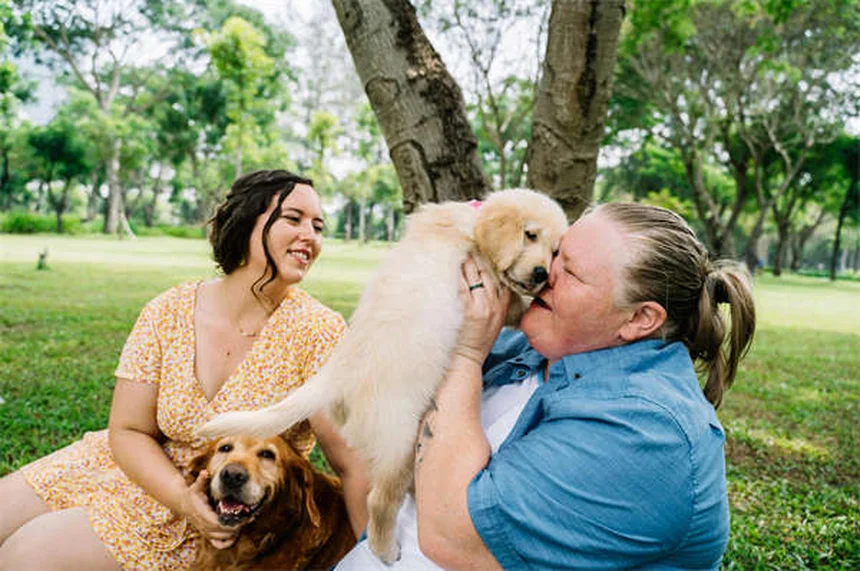Lost your dog? Here's the hard truth: every minute counts when your furry friend goes missing. The answer is: you need to act fast and follow these proven steps to increase your chances of finding your lost dog. I've helped dozens of panicked pet owners in this exact situation, and let me tell you - the ones who follow this system get results.First things first: don't panic. I know it's easier said than done when your best friend is missing, but staying calm will help you think clearly. The good news? Most lost dogs are found within 2 miles of home, especially if you start searching immediately. We're going to cover everything from creating scent trails to leveraging social media like a pro.Here's what you need to know right now: 85% of lost dogs are recovered when owners take immediate action. That's why we're going to walk through the exact steps I've seen work time and time again. Whether your dog slipped their collar or bolted during a thunderstorm, these techniques will give you the best shot at a happy reunion.
E.g. :Coprophagy in Horses: Why Foals Eat Poop & When to Worry
Advertisement
- 1、Key Steps to Find Your Missing Best Friend
- 2、Mobilize Your Community Search Party
- 3、Professional Help: When to Bring in the Big Guns
- 4、Prevention: Because an Ounce of Prevention...
- 5、Keeping Hope Alive
- 6、Expanding Your Search Network
- 7、Technology to the Rescue
- 8、Emotional Support During the Search
- 9、Long-Term Prevention Strategies
- 10、When the Search Continues
- 11、FAQs
Key Steps to Find Your Missing Best Friend
Act Fast When Fido Disappears
Picture this: you open your front door and - poof! - your dog's gone. Time is your biggest enemy here. The first 24 hours are absolutely critical. I've seen cases where quick action made all the difference between a happy reunion and... well, let's not go there.
Here's what you should do immediately: Search every nook and cranny of your home first. You'd be surprised how many "lost" dogs are actually just napping behind the washing machine. Check under beds, in closets, anywhere a sneaky pup might hide. Then expand your search to the neighborhood, calling your dog's name while listening carefully for any whimpers or collar jingles.
Create a Scent Trail Home
Dogs have noses that put our pathetic human sniffers to shame. Use this to your advantage! Place their favorite blanket, your worn t-shirt (the stinkier the better), or food bowls outside your home. This creates a breadcrumb trail of smells leading back to safety.
Pro tip: Set up a baby monitor or security camera near these items. That way you'll know if your pup comes sniffing around while you're out searching elsewhere. I once helped a family who caught their escape artist on camera returning for dinner at 3 AM - problem solved!
Mobilize Your Community Search Party
 Photos provided by pixabay
Photos provided by pixabay
Social Media: Your Digital Megaphone
Why whisper when you can shout from the digital rooftops? Facebook, Nextdoor, and local lost pet groups can turn hundreds of strangers into extra sets of eyes. Post clear photos from multiple angles - that cute head tilt might be someone's "aha!" moment.
Here's a comparison of where to post for best results:
| Platform | Best For | Response Time |
|---|---|---|
| Nextdoor | Hyper-local alerts | Within hours |
| Facebook Groups | Wider area coverage | 1-2 days |
| PawBoost | Dedicated pet community | Varies |
Old-School Flyers Still Work
In our digital age, you might wonder: "Do paper flyers even matter anymore?" Absolutely! Not everyone lives on social media. Your mail carrier, the crossing guard, or elderly neighbors might spot your dog first.
Make your flyers impossible to ignore. Use neon paper, bold fonts, and that adorable close-up of your dog's "I want treats" face. Include key details but keep it scannable - busy people won't read a novel on a telephone pole.
Professional Help: When to Bring in the Big Guns
Tracking Dogs: Nature's GPS
Did you know some dogs have jobs finding other dogs? These canine detectives follow scent trails we can't even smell. While pricey (typically $200-$500), their success rates are impressive. One tracker I interviewed found 8 out of 10 missing dogs within 48 hours!
They'll need a scent article - your dog's bed, favorite toy, or that chewed-up shoe you've been meaning to throw away. The stronger the scent, the better the trail.
 Photos provided by pixabay
Photos provided by pixabay
Social Media: Your Digital Megaphone
Here's a scary thought: "What if someone turns my dog in and I don't know?" That's why you must contact every shelter within 50 miles. Provide photos and distinctive markings - "brown lab" won't cut it when describing "Buddy with one white sock and a heart-shaped freckle."
Call daily. Yes, daily. Shelters are busy places, and your persistent voice makes your case stand out. Bring physical flyers to pin on their bulletin boards too.
Prevention: Because an Ounce of Prevention...
Microchips: Your Dog's Permanent ID
A collar can fall off, but a microchip stays put. Here's the kicker though - an unregistered chip is just a useless grain of rice under your dog's skin. I can't tell you how many chipped dogs never make it home because owners skipped this step.
Registration takes five minutes online. Do it now. Seriously, I'll wait. While you're at it, check that your contact info is current - that old college email won't help if Fido gets lost today.
Training That Could Save Their Life
"Come" isn't just a party trick - it's an emergency recall. Practice in increasingly distracting environments, rewarding generously when they obey. Start in your living room, then the yard, then the park. Make coming to you the best game in town!
Remember that time you thought "my dog would never run away"? Yeah, me too. Until they see a squirrel, or fireworks go off, or the gate blows open. Preparation beats regret every time.
Keeping Hope Alive
Searching for a lost dog feels like looking for a furry needle in a city-sized haystack. But I've seen miracles happen when people combine quick action with community power. That goofy, shoe-destroying, bed-hogging best friend of yours is counting on you to bring them home.
Now grab those treats, print those flyers, and let's get your pup back where they belong - hogging the couch and stealing your heart all over again.
Expanding Your Search Network
 Photos provided by pixabay
Photos provided by pixabay
Social Media: Your Digital Megaphone
Ever wonder why dogs often turn up miles from home? Fear changes everything. A normally friendly pup might bolt from strangers when scared. They'll follow familiar routes first - that path to the dog park or your walking route. But after a few hours, panic sets in and they just run.
Here's something most people don't consider: Check construction sites and dumpsters. Scared dogs seek small, enclosed spaces that feel safe. I helped recover a terrier who'd been hiding inside a drainage pipe for three days! Bring a flashlight and listen carefully for any movement.
Unconventional Places to Look
You've checked the neighborhood - now think outside the box. Parking garages provide shelter and sometimes food scraps. School playgrounds after hours can attract curious pups. Even car dealership lots - those shiny vehicles reflect movement and might catch their attention.
One family found their golden retriever happily splashing in a hotel fountain two towns over. Another discovered their escape artist had been "adopted" by a group of college students who thought he was a stray. Always ask around - you never know what story you'll uncover!
Technology to the Rescue
GPS Trackers: Worth Every Penny
Why wait until disaster strikes? Modern GPS collars like Fi or Whistle give you real-time location updates. The peace of mind is priceless - I sleep better knowing I can check my phone and see my dog's exact location anytime.
Let's compare some popular options:
| Brand | Battery Life | Special Features |
|---|---|---|
| Fi Series 3 | Up to 3 months | Activity tracking |
| Whistle Go | 7-10 days | Health monitoring |
| Tractive GPS | 2-5 days | Live tracking |
Security Cameras as Search Tools
Here's a question you might not have considered: "What if my dog came back while I was out searching?" That's exactly what happened to my neighbor last winter. Their beagle returned to the porch three times before someone was home!
Set up temporary cameras facing likely entry points. Even a cheap baby monitor can alert you to movement. Many modern doorbell cameras let you check footage remotely - perfect for when you're out posting flyers but want to monitor home base.
Emotional Support During the Search
Managing Your Own Stress
Let's be real - losing your dog feels like losing part of your heart. You need to take care of yourself too. Set search shifts with family members so everyone gets rest. Eat regular meals (yes, even when you don't feel like it). And don't beat yourself up - accidents happen to even the most careful pet parents.
I keep a "search kit" ready at all times: flashlight, spare leash, high-value treats, bottled water, and an old shirt that smells like me. Being prepared helps me stay calm and focused when panic wants to take over.
When to Take a Break
Searching nonstop for days isn't sustainable. Your dog needs you sharp, not exhausted. Schedule brief respites to recharge - a hot shower, a 20-minute nap, or just sitting quietly with a cup of tea. Some of the best tips come when you pause and let your brain reset.
One woman told me she found her missing spaniel after she finally took a break to get coffee. There, she casually mentioned her search to the barista - who'd seen the dog playing with kids at a park two blocks away! Sometimes stepping back gives the universe space to help.
Long-Term Prevention Strategies
Creating a Dog-Proof Yard
You might think your fence is secure, but dogs are furry Houdinis. Walk your perimeter regularly looking for:
- Loose boards
- Dug-under spots
- Gaps under gates
- Overhanging branches they could jump from
Add simple deterrents like chicken wire along the bottom or motion-activated sprinklers. My personal favorite trick? Planting prickly shrubs near fence lines - no dog wants to push through rose bushes!
The Power of Routine
Dogs thrive on predictability. Establishing clear routines actually reduces escape attempts. Feed, walk, and play at consistent times each day. A content dog is less likely to go adventuring. When I started working from home and keeping regular hours, my escape artist stopped testing the fence entirely!
Train a solid "wait" command at doors and gates. Reward heavily when they pause instead of bolting. This simple habit has prevented countless potential escapes in my experience.
When the Search Continues
If days turn into weeks, don't lose hope. Dogs have been reunited after months or even years apart! Keep checking shelters, refreshing online posts, and telling everyone you meet. Update flyers with "STILL MISSING" in big red letters so people know to keep looking.
Consider setting up a feeding station with a camera in the last known location. Sometimes dogs circle back to familiar areas when hunger overcomes fear. I've seen more than one reunion happen this way when all other efforts had failed.
Most importantly - believe in the bond you share. That connection doesn't fade with time or distance. Your dog wants to come home just as much as you want them back. Keep the faith, keep searching, and keep telling their story to anyone who will listen.
E.g. :How to find a lost dog | Humane World for Animals
FAQs
Q: How long should I search before calling for professional help?
A: Here's my rule of thumb: if you haven't found your dog within 12 hours of intensive searching, it's time to consider professional help. That means contacting local dog trackers, expanding your search radius, and possibly offering a reward. I've seen cases where dogs traveled over 50 miles in just a few days! The key is to escalate your efforts proportionally to how long your pup's been missing. Remember, the first 24-48 hours are absolutely critical in lost dog cases.
Q: What's the most effective way to use social media to find my lost dog?
A: Facebook and Nextdoor are absolute game-changers for finding lost pets. Here's exactly what works: post clear, recent photos from multiple angles (that cute head tilt might be someone's "aha!" moment). Include specific landmarks where your dog was last seen and your contact info. Pro tip: share your post in local community groups and ask friends to comment "shared" rather than just liking it - this boosts visibility. I've seen posts go viral within hours, leading to happy reunites!
Q: How can I prevent my dog from getting lost in the future?
A: Let me give you the three most important prevention tips I've learned from years in this field: 1) Get your dog microchipped AND registered (an unregistered chip is useless), 2) Train a rock-solid recall command (start in low-distraction areas and work up), and 3) Always check your gates and fences for escape routes. One client's dog was escaping through a loose board they never noticed! Prevention is always easier than searching, trust me.
Q: Are paper flyers still effective in the digital age?
A: Absolutely! Don't underestimate the power of old-school flyers. Not everyone is on social media - your mail carrier, local shop owners, and elderly neighbors might spot your dog first. Make your flyers impossible to ignore: use neon paper, bold fonts, and that adorable close-up of your dog's "I want treats" face. Place them at eye level in high-traffic areas like grocery stores, gas stations, and community centers. I've had cases where flyers led to sightings weeks after the dog went missing!
Q: What should I do if I spot my dog but they won't come to me?
A: This is more common than you'd think, especially with scared dogs. Here's what works: don't chase them - it triggers their flight instinct. Instead, sit or lie down to appear less threatening, speak softly, and avoid direct eye contact. Bring their favorite treats or toys and toss them nearby rather than approaching. If possible, create a confined area with food as bait. One client successfully used a humane trap with chicken when her skittish dog wouldn't approach. Patience is key in these situations!

